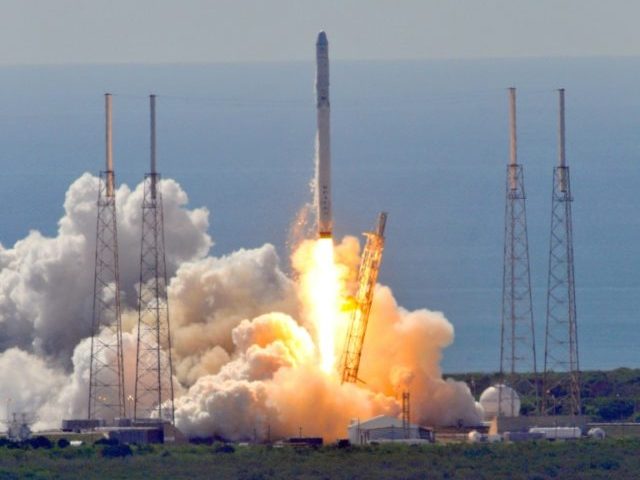Guadalajara (Mexico) (AFP) – SpaceX chief Elon Musk is set Tuesday to unveil his ambitious plan to build a human colony on Mars, an endeavor that experts say requires tens of billions of dollars.
He will lay out his vision during a presentation titled “Making Humans a Multiplanetary Species” at the International Astronautical Congress in the western Mexican city of Guadalajara.
Although the South Africa-born Canadian-American entrepreneur has given few details about his plan, he promised in a Washington Post interview in June that it will be “mind-blowing.”
He will discuss the “long-term technical challenges that need to be solved to support the creation of a permanent, self-sustaining human presence on Mars,” the conference’s program says.
SpaceX plans to send an unmanned Dragon cargo capsule to Mars as early as 2018, paving the way for a human mission that would leave Earth in 2024 and arrive on the Red Planet the following year.
– Aggressive goal –
However, experts warn reaching Mars — 225 million kilometers (140 million miles) from Earth on average — and living there requires major engineering feats and a massive budget.
“It’s unlikely that (Musk) will be able to get humans on Mars by 2025,” said John Logsdon, former director of the Space Policy Institute at George Washington University, noting that Musk has wrongly forecast the launch of SpaceX rockets in the past.
SpaceX would have to team up with a state space agency to afford such a mission, he said.
“Bottom line is the cost. You’re talking of tens of billions of dollars and SpaceX doesn’t have that type of money.”
But retired astronaut Leroy Chiao said Musk has “amassed technical and operational experts, and SpaceX is generating revenue from satellite launches.”
“Elon Musk sets aggressive goals, and while he doesn’t always make the exact date, he is usually able to make those goals. I would say that it is possible, but aggressive,” Chiao told AFP.
The US space agency NASA, which is also studying the effects of long-term space flight on the human body, has announced its own plans to send people to Mars by the 2030s.
A research village could be built on the moon to serve as a “stepping stone” to a Mars mission, European Space Agency chief Jan Woerner said at the Guadalajara conference on Monday.
“To go to Mars means also to use the resources over there and this can be also tested on (the) moon,” he said.
– Commercial space race –
SpaceX is not the only company dreaming about sending people to Mars.
Blue Origin, founded by Amazon chief Jeff Bezos, unveiled plans earlier this month to build a massive rocket called New Glenn to launch people to space, but the company’s president says going to the Red Planet could take decades.
“We want to have millions of people living and working in space in a decades timeframe if they want to,” Blue Origin president Rob Meyerson told AFP.
The company, which has built another rocket that has performed vertical landings, is currently focusing on finding a way to get people to lower orbit “routinely and affordably,” he said.
Blue Origin is in competition with British billionaire Richard Branson’s Virgin Galactic in the race to send tourists to space.
But asked in Guadalajara whether Mars was an objective, Virgin Galactic chief executive George Whitesides said: “Richard and my view is that we are going to be pretty focused on planet Earth in the immediate future.”
While Virgin Galactic unveiled a new winged spacecraft earlier this month, SpaceX and Blue Origin have launched rockets that can land vertically, a key breakthrough that could cut costs for space travel by making rockets reusable.
SpaceX has designed the powerful Falcon Heavy rocket, which could send a manned Dragon spacecraft into space.
The company plans to launch the 70-meter (230-foot) tall rocket, which has a liftoff thrust equivalent to 18 Boeing 747 aircraft at full power, later this year.
SpaceX was hit by a setback on September 1 when another rocket, the Falcon 9, exploded on the launch pad during a test in Florida.
SpaceX had previously logged 18 successful Falcon 9 launches.

COMMENTS
Please let us know if you're having issues with commenting.